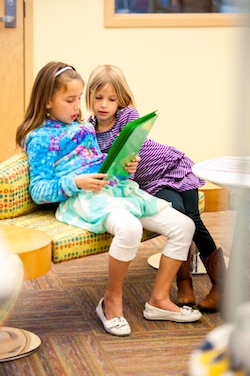Student voice, does it matter? Close your eyes and think about a time you’ve observed a lesson, or perhaps one you were facilitating. Was student voice present in the lesson? You immediately think: YES! The teacher was leading the lesson, the students were gathered near the teacher and they were engaged in the work. The students were raising their hands, answering questions, and the teacher was praising their correct responses. However, take a minute to think a little deeper. Did the students really have opportunities for them to engage in authentic conversations with their peers, or were the student interactions just them responding to the teacher questions?
There’s a difference between students responding only to teacher questions and students having genuine conversations with their peers during a lesson. In a classroom where the teacher drives the conversation and calls on one student at a time to answer a question, the teacher is creating an environment where only the adult is in control and only their voice matters. With teachers calling on students individually, it becomes a “tennis match” with just the teacher and that one student engaged in the work. In order to increase engagement in the classroom, the majority of the students need to be active within the lesson. When students do the work and share out their thoughts their voice is being heard and they are engaged in the lesson.

One cooperative learning strategy that allows for student voice to be present within the lesson is “Think, Pair, Share.” Think, Pair, Share gives the students a chance to:
- THINK! Think about the question that is being asked, thus providing the students with time to process their own thoughts before having to immediately respond to the question
- PAIR! Pair up with their partner in order to have a conversation with a peer
- SHARE! Share out with their partner their thoughts and have a genuine conversation with a classmate.
Through the strategy Think, Pair, Share, all the students have the chance to talk and be engaged in the work. While the students are conversing with their partners, the teacher is able to move around to hear the responses of several student conversations. As the teacher monitors the conversations then the voices of several students are heard instead of just hearing the response of one student who likes to share out to the whole group.
While Think, Pair, Share is one strategy to engage students, I wonder what other strategies have you used in your classroom to engage students and promote student voice? Have these strategies been successful? Why or why not?
